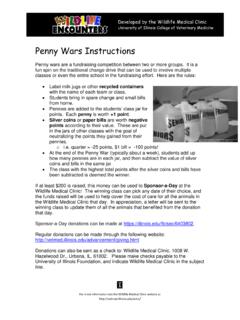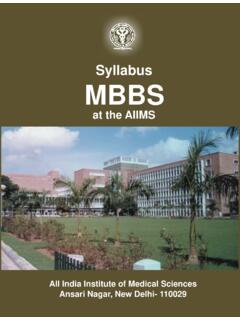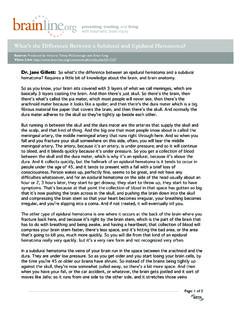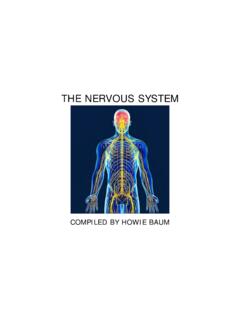Transcription of Reptile Cardiology: A Review of Anatomy and Physiology ...
1 Topics in Medicine and SurgeryTopics in Medicine and SurgeryReptile Cardiology: A Review of Anatomy andPhysiology, Diagnostic Approaches, andClinical DiseaseMarja Kik, DVM, PhD, Dipl Vet PathMark A. Mitchell, DVM, MS, PhDAbstractReptile cardiology is in its infancy. Veterinarians treating reptiles should de-velop a basic knowledge of Reptile cardiovascular Anatomy and is vital to interpreting the results of various diagnostic tests andplanning an effective therapeutic plan for a case. This article will provide areview of the Anatomy and Physiology of the reptilian cardiovascular system, thecommon diagnostic tests used to assess cardiac function, and the commondisease presentations associated with the cardiovascular system. Copyright 2005 Elsevier Inc. All rights :Cardiology; cardiac; Reptile ; circulation; heartReptile cardiology is an underdevelopedspecialty of Reptile medicine.
2 During the1950s-1970s, a significant amount of re-search was done to elucidate the cardiac physi-ology of Although a great deal isknown regarding the function of the reptileheart, its application to clinical veterinary med-icine has been limited. More recently, researchhas focused on the application of the physio-logic data, which should improve our ability todiagnose and treat cardiac disease in Current research studies include,characterizing the heart and respiration rates inreptiles with distinct behavioral strategies, de-scribing the variation in resting and maximalheart rate, and determining the factors thatinfluence those ,3,5 In addition, newvascular systems also have been discovered It will be important for the veterinaryclinician to remain current and use this emerg-ing data to interpret and manage cardiac dis-ease in their Reptile and PhysiologyHistorically, the noncrocodilian heart (lizards,snakes, chelonians) has been classified as a three-chambered organ.
3 However, some authors con-sider the sinus venosus an additional chamber,and thus classify the noncrocodilian heart as afour-chambered The major difference be-From the Department of Pathobiology, Section of Diseases ofSpecial Animals and Wildlife, Faculty of Veterinary Medicine,Utrecht University, Yalelaan 1, 3584 CL Utrecht, The Neth-erlands, and Department of Veterinary Clinical Sciences,School of Veterinary Medicine, Louisiana State University,Baton Rouge, LA 70803, correspondence to: Marja JL Kik, Department ofPathobiology, Section of Diseases of Special Animals and Wild-life, Faculty of Veterinary Medicine, Utrecht University, Yale-laan 1, 3584 CL Utrecht, The Netherlands. 2005 Elsevier Inc. All rights $ in Avian and Exotic Pet Medicine, Vol 14, No 1 ( January), 2005: pp 52 60tween the crocodilian and noncrocodilian heart isthat there is a complete ventricular septum incrocodilians, while the septum or ridge is incom-plete in squamates and chelonians.
4 In the non-crocodilian heart, the ridge is comprised of mus-cle and minimizes the mixing of oxygenated anddeoxygenated blood . In some chelonians, thisridge is well developed, and almost separates theventricle into two of the three-chambered arrangement, blood flow through the reptilian heart is quitedifferent from mammals. blood from the preca-val, postcaval, and hepatic veins drain into thesinus venosus, a muscular structure located on thedorsal surface of the right atrium. During atrialdiastole, blood drains from sinus venosus to theright atrium. The right atrium of snakes can belarger than the During atrial systole, theblood drains into the cavum venosum of the ven-tricle. Deoxygenated blood entering the right sideof the ventricle does not mix with oxygenatedblood from the left side. The atrioventricularvalves occlude the interventricular canal betweenthe cavum arteriosum and cavum venosum duringatrial systole(Fig 1).
5 The Reptile ventricle is com-prised of both compact and spongy ventricle is divided into three most ventral cavum pulmonale extends cra-nially into the pulmonary artery. The dorsally sit-uated cavum arteriosum and cavum venosum re-ceive blood from the left and right atria, and areconnected by an interventricular canal. Mixing ofwell-oxygenated and poorly oxygenated blood isavoided by a series of muscular ridges in theventricle, and by the timing of ventricular contrac-tions. The left and right aortic branches receiveblood from the cavum venosum. The atrioventric-ular valves partially occlude the interventricularcanal during atrial systole. The pulmonary artery,which branches in reptiles with two functionallungs, arises from the cavum pulmonale and car-ries deoxygenated blood to the lungs. The aorticbranches arise from the cavum venosum and carryoxygenated blood to the systemic circulation.
6 Un-der normal respiration conditions, 60% of thecardiac output enters the lungs, whereas 40% en-ters the systemic varanid lizards, ventricular pressure separa-tion and high systemic blood pressure haveevolved as an adaptation to an active predatorylifestyle and elevated metabolic rates. The Savan-nah monitor (Varanus exanthematicus) can reflex-ively synchronize its heart rate and ventilation,providing efficient diffusion of oxygen into In a number of snake genera, includingVipera,Natrix,andThamnophis, ventricular pres-sure separation does not occur. InPython molurus,however, the systemic blood pressure is similar tomammals, and considerably higher than mostother reptiles except for varanid lizards. But py-thons are, in contrast with the varanid lizards,inactive predators. Wang and coworkers3 pro-posed that ventricle pressure separation and thehigh blood systemic pressure in this python wasrelated to a high oxygen consumption digestionor its use of shivering thermogenesis during heart of most snakes is located at a pointone-third to one-fourth of its length caudal to thehead.
7 In some aquatic species, the heart is locatedin a more cranial position. The snake heart can bevisualized percutaneously in snakes less than 2 mby placing the animal in dorsal recumbency andvisually locating the beating heart. The chelonianheart is located on the ventral midline where thehumeral, pectoral, and abdominal scutes of theplastron intersect. In most species of lizards, theheart is encased in the pectoral girdle. Varanidsare an exception, as their heart is located morecaudally in the coelomic rates in reptiles are generally lowerthan in mammals or birds. Numerous factors con-tribute to variation in heart rate (HR), includingbody size, temperature, oxygen saturation of theblood, respiratory ventilation, postural or gravita-tional stress, hemodynamic equilibrium, and bodysensory ,5 In reptiles, increased ambienttemperatures are associated with increased HRand decreased stroke volumes.
8 Interestingly, theFigure heart. (Drawing courtesy of Kardong).Cardiology in Reptiles53relationship between HR and oxygen consump-tion does not remain constant as external condi-tions change. Cardiac function is maximizedwhen a Reptile is maintained within its preferredtemperature range. Perturbed hemodynamics, in-cluding alterations in water balance or the ionicand pharmacological status of the blood , also canaffect the HR. Reptiles that experience blood lossas a result of surgery or trauma can become tachy-cardic to ensure that the tissues remain oxygen-ated and to compensate for the hypovolemia. Alsoduring acute hemorrhage, snakes are capable ofmaintaining hemodynamic stability, by shifting in-terstitial fluid to the vascular are ectotherms and are dependent ontheir environmental temperature to regulate theircore temperature.
9 The cardiovascular system isessential to the regulation of the Reptile bodytemperature. Basking reptiles increase the rate ofheat absorption by increasing their heart rate,while during cooling periods reptiles decreasetheir heart rate to minimize heat loss. Changes insystemic circulation also occur during times ofheat absorption. Vasodilation of the peripheralcirculation during basking can increase body tem-perature, while vasoconstriction occurs can also affect HR. During normalrespiration, pulmonary resistance is minimal andblood flow to the lungs and heart rate is maxi-mized. However, when a Reptile is experiencingvoluntary apnea (eg, diving event) pulmonary re-sistance increases, often resulting in decreasedblood flow to the lungs and a reduced is a natural event in reptiles duringdiving and extended breath-holding.
10 With a re-duced HR there is an increase in the peripheralresistance, which can lead to the redirection ofblood to vital organs, such as the brain and extended breath-holding events, reptilescan switch from aerobic to anaerobic is met with a variety of physiologic changes,including an acidemia. This acidemia can be fur-ther exacerbated by the decrease in oxygen ex-change that occurs as the pulmonary blood flow isrestricted. To compensate, blood is shunted fromthe right to left to ensure that blood flow contin-ues to the systemic circulation. Once normalbreathing resumes, pulmonary resistance de-creases, the HR increases, and the shunting of theblood is discontinued. These physiologic changesmay occur when certain anesthetics are used. Dis-sociative agents, alpha-2 agonsists, and propofolare all routinely used to anesthetize reptiles, withall three known to cause cardiopulmonary depres-sion.











